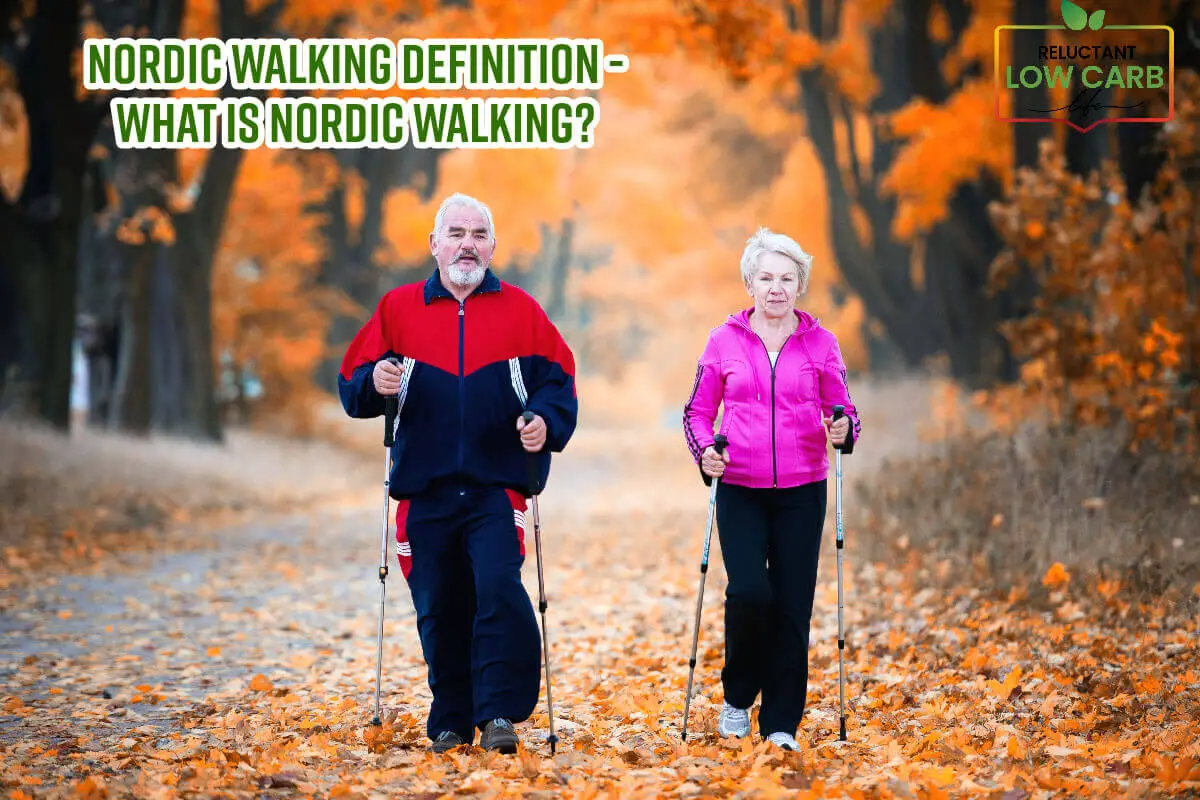Walking is one of the most fundamental forms of human movement. It’s a simple, effective way to exercise, reduce stress, and get from point A to point B.
But what if you could amplify the benefits of a simple walk by adding a pair of specially designed poles? Enter Nordic walking, an exercise trend that has taken over parts of Europe and Asia, transforming walking into a powerhouse of health benefits. Read on as we explore many of the benefits of Nordic Walking.
Table of Contents
- The Power Of Nordic Walking: More than Just A Walk In The Park
- What Is Nordic Walking?
- Nordic Walking And A Litany Of Health Benefits
- The Technique Of Nordic Walking
- How To Get Started With Nordic Walking
- Related Question
The Power Of Nordic Walking: More than Just A Walk In The Park
Many people harbor misconceptions about Nordic walking, dismissing it as merely walking with poles for added support, akin to using a crutch. This misinterpretation does a disservice to the multifaceted benefits of the sport. Nordic walking is far from just ‘walking with poles’; it’s an enhanced walking experience that brings a variety of added perks, from increased calorie burn to improved mental well-being.
We will delve into a deeper understanding of Nordic walking and how it can significantly enrich your fitness journey.
Contrary to the belief that the poles are used for balance or support like crutches, in Nordic walking, they are leveraged to activate more muscles and intensify the workout.
The proper technique involves a coordinated movement between your arms and legs, which propels you forward and engages muscles across your upper body, back, and core. This results in a calorie burn of up to 67% more than standard walking.
In short, the poles aren’t crutches; they are tools that transform a simple walk into a full-body workout, making Nordic walking an ideal exercise regimen for everyone.
What Is Nordic Walking?
Nordic walking is essentially walking enhanced by the use of specialized poles. Similar to ski poles but uniquely designed for walking, these poles are instrumental in elevating walking to an all-body workout.

While normal walking primarily involves muscles below the waist, Nordic walking engages up to 90% of your muscles, including the arms, shoulders, and upper back. This results in higher calorie burn, improved endurance, and increased overall fitness.
The Finnish Origins Of Nordic Walking Defined
Nordic walking has its roots in Finland and originally started as a training regimen to keep Finnish cross-country skiers fit during the off-season. But what started as a form of athletic conditioning quickly gained widespread attention when the Finnish people discovered its holistic benefits.
Even non-athletic or with limited mobility found that Nordic walking was an accessible and enjoyable way to improve their health. Since then, the sport has spread beyond the Finnish borders, attracting more than 10 million enthusiasts globally.
The Global Spread Of Nordic Walking
Although Nordic walking is not as popular in the United States as in countries like Finland, the United Kingdom, Germany, and Japan, the sport is rapidly gaining traction. It has become a global phenomenon, catching the attention of researchers, medical professionals, and fitness experts who have all noted its extraordinary health benefits.
Nordic Walking And A Litany Of Health Benefits
The health advantages of Nordic walking go beyond simple cardio improvement. Numerous studies confirm that Nordic walking outperforms regular walking in calorie burn by 18% to 67%, depending on the intensity and technique. But the benefits don’t stop there:

Physical Health
- Reduced Fat Mass: The full-body engagement of Nordic walking helps burn fat more efficiently.
- Cholesterol and Triglycerides: It lowers “bad” LDL cholesterol and triglycerides while boosting “good” HDL cholesterol.
- Muscle Strength and Flexibility: Using poles encourages a fuller range of motion and engages more muscle groups.
- Cardiovascular Fitness: Enhanced cardio workout without the high-impact stress on joints that running can induce.
Mental Well-Being
- Depression and Anxiety: The endorphins released during this full-body exercise help alleviate symptoms of depression and anxiety.
- Quality of Life: Increased physical fitness, combined with the outdoor, social aspect of Nordic walking, significantly improves overall quality of life.
Added Stability
One often overlooked benefit is the increased stability that comes with using poles. This is especially beneficial for older adults or those with balance issues. The poles provide additional ground contact points, allowing you to walk faster and further with added confidence.
The Technique Of Nordic Walking
The technique for Nordic walking is slightly different from regular walking. It involves a coordinated, alternating pattern of arm and leg movement: when your right foot steps forward, your left arm swings ahead with the pole, and vice versa.
The poles touch the ground behind you, propelling you forward and engaging your upper body muscles. It may take a little getting used to, but the rhythmic movement becomes second nature with practice.

How To Get Started With Nordic Walking
Getting started with Nordic walking is simple. Here are some things you need to invest in for your ultimate Nordic Walking experience:
- Poles: Invest in a good pair of Nordic walking poles. These poles come with removable rubber tips for different terrains. Most poles have a rubber foot and a slight sharp edge that can be used in icy or winter conditions.
- Footwear: Comfortable, supportive walking shoes are a must.
- Instruction: While you can start independently, taking at least one instructional class to understand the proper technique is beneficial.
- Location: You can Nordic walk almost anywhere you’d typically walk—parks, trails, or even your neighborhood.
Nordic walking offers a remarkable array of health benefits that go far beyond those of regular walking. From its roots in Finland as a training method for elite athletes to its evolution into a sport that embraces all age groups and fitness levels,
Nordic walking is more than just a trend. It’s a holistic exercise regimen that promotes physical, mental, and emotional well-being, appealing to over 10 million people worldwide.
Whether you’re an athlete looking to cross-train or get more out of your daily walks, Nordic walking offers a compelling option. So, grab a pair of poles and take your walking to the next level.
At Reluctant Low Carb Life, we are staunch advocates of the Health Trifecta: Fullness, Fitness, and Freshness. Additionally, we embrace the pillars of health, wellness, and graceful aging. Our mission is to provide honest and precise information to individuals dedicated to adopting a healthy lifestyle while enhancing their fitness and well-being.
We have a free monthly newsletter that is filled with information and helps you remain updated. Subscribe to the Reluctant Low Carb Life newsletter by clicking here.
Listen to our weekly podcast, Reluctant Low Carb Life, on all the major podcast platforms by clicking here.
Follow us on Instagram and Facebook by clicking here.
Related Question
Nordic Walking The Full Body Workout Benefits
We find the keto diet a more effective way to lose weight because your body turns your stored body fat into weight loss. Many people also lose weight on the calorie deficit diet. You must watch what you eat and how much you eat on both diets. Both diets want you to cut out on sugar, and the keto diet wants you to cut out on carbohydrates.
You can read more about Nordic Walking The Full Body Workout Benefits by clicking here.
What Is Nordic Walking?
Nordic walking is a technique where you use poles to propel you forward when walking. Nordic walking uses more muscles than just regular walking. To master the Nordic walking technique, you should focus on three main areas: the Nordic walking style, the correct posture, and the proper use of the Nordic walking poles.
You can read more about What Is Nordic Walking? by clicking here.
Is Nordic Walking Better Than Regular Walking?
Most healthcare professionals will look at several blood sugar level tests to check if your blood sugar levels are normal. The three significant tests are the A1C blood sugar level, the fasting blood sugar test, and the glucose tolerance test. All these tests have different numbers that help show if you have a normal blood sugar range.
You can read more about Is Nordic Walking Better Than Regular Walking? by clicking here.








